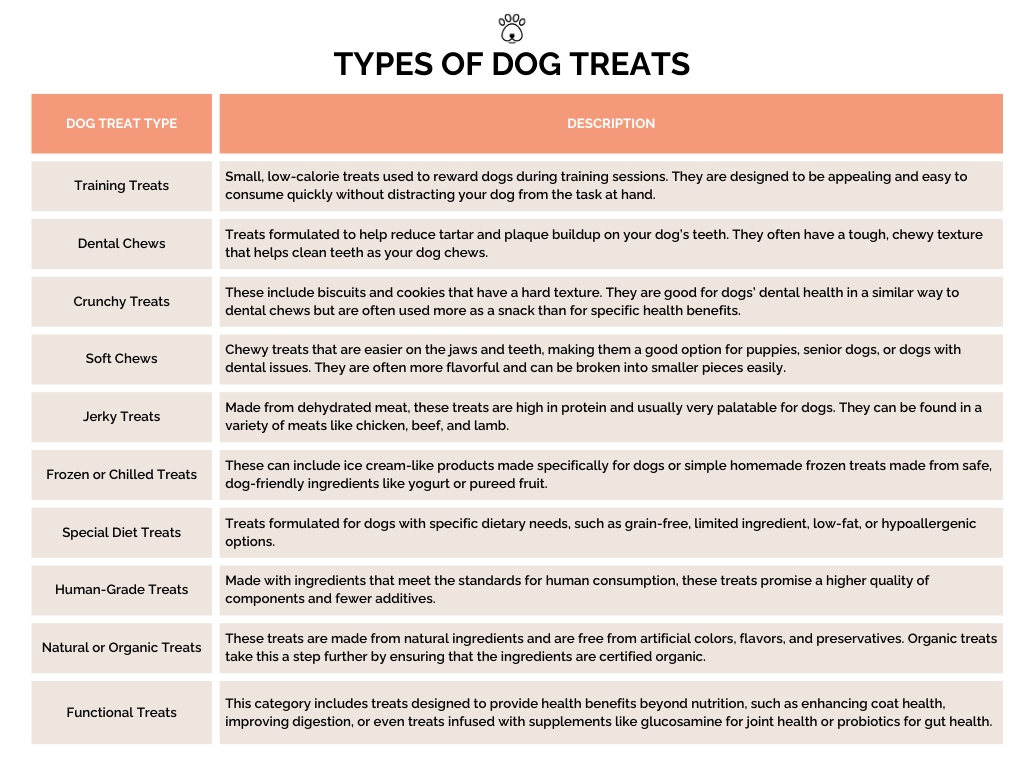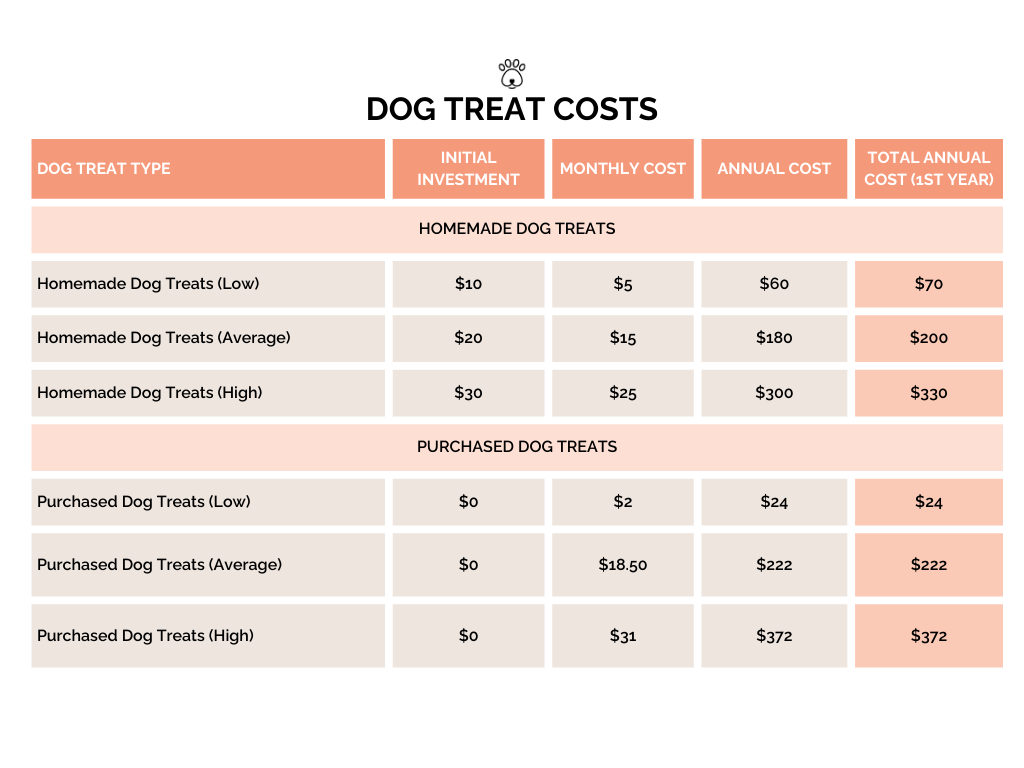
Do you bake or buy your dog treats? I bake mine. No surprise there. I decided to make one and two-step dog treats for Sugar before I ever came up with the idea to bake pupcakes.
Sugar is a picky eater. She wouldn’t just eat any treat I put in front of her. Or she’d absolutely love a brand of treats for a while and get sick of the taste. I can’t tell you how many cute treats I’ve bought that went to waste because Sugar wouldn’t eat them.
I never thought I’d be one of those dog moms, but here we are. Several dog moms have asked me if it makes more sense to bake or to buy your dog’s treats. So, in this blog post we’re exploring how to make the right dog treat decision for you and your dog.
WHAT ARE DOG TREATS
A dog treat is a snack, or a reward we give our dogs. They can be purchased at grocery stores, pet stores, local shops, bakeries, farmer’s markets, and online. You can also make them at home. Dog treats come in variety of forms, flavors, and sizes to meet different dietary needs and preferences. Whether you purchase your dog’s treats or make them at home, most of them fall into one of the following categories.

HOW MUCH DO DOG TREATS COST?
According to MarketWatch, dog parents spend an average of $221 per year on dog treats, which equals approximately $18.50 per month. In addition, dog treat costs account for almost 10% of the reoccurring pet costs. An article released by Rover.com states that dog parents spend anywhere between $20 and $380 per year on dog treats. So, whether you’re purchasing your dog treats or making them at home, there are costs associated with them.
Cost Factors for Purchased Dog Treats
The cost purchased dog treats can be influenced by several factors. The quality of ingredients is one of the biggest factors. High-quality ingredients, such as organic, non-GMO, or locally sourced components, typically cost more than standard ingredients. Treats made with premium meats, exotic fruits, or specialty dietary components like gluten-free or grain-free ingredients also tend to be more expensive.
Other factors, such as the manufacturing process, health and nutritional benefits, certifications, packaging, distribution and retail channels, regulatory compliance, and economies of scale contribute to the cost of the treats your purchasing in the store.
Well-known brands with strong marketing campaigns and extensive distribution networks might price their treats higher due to brand value. Also, specialty treats that cater to your dog’s dietary needs or preferences, such as hypoallergenic, limited ingredient, or prescription diets, are usually more expensive due to the specialized ingredients and smaller production scales.
Cost Factors for Homemade Dog Treats
The cost of homemade dog treats can vary based on several factors, much like purchased dog treats. However, the elements are a bit different. Homemade dog treat ingredients are the highest cost factor. Using high-quality or organic ingredients generally increases costs. However, you have the flexibility to choose less expensive or bulk ingredients to manage expenses. If your dog has specific dietary needs, such as grain-free or hypoallergenic requirements, sourcing these specialty ingredients can be more costly than standard ones.
Other cost factors include the recipe complexity. Recipes that require longer preparation time as well as exotic or unique items can be more expensive. Equipment and tools, packaging and storage, recipe quantity, ingredient sourcing, and economy inflation can also contribute to the cost of homemade dog treats.
Opportunity costs also plays a role in homemade treats. The time you spend making those treats could be the time you spend on other potentially productive activities, which represents an opportunity cost.
The table below outlines the financial implications of both homemade and purchased treats. The initial cost represents the one-time cost of equipment or basic supplies for making homemade dog treats in the first year. Monthly and annual costs represent the low, average, and high monthly costs for spend on dog treats. The total annual cost (year 1) includes the one-time initial investment for the first year of purchasing or making dog treats.

WHAT ELSE SHOULD I CONSIDER?
Some dog moms, like me, love to bake their dog’s treats. Other dog moms would rather buy them. There’s no right or wrong way. However, if you’re trying to decide on what works best, here are a few other things to consider.
Dog Treat Nutrition & Health
Homemade treats allow you full control over the ingredients used in your dog’s treats, which enable you to cater to your dog’s specific dietary needs or allergies. Purchased dog treats don’t require any start up investments. However, it’s crucial to monitor ingredients for potential health impacts.
Convenience & Time Commitment
Purchased treats offers convenience. Especially, if you don’t have time to make them. Bulk purchases can also reduce shopping frequency, which saves you time and travel expenses. Homemade treats require time for preparation but can be a fun and rewarding activity for you and your dog. It can also prevent help you save money and reduce impulse buys.
Shelf-Life & Preservation
Purchased treats may have a longer shelf life due to preservatives. Homemade treats have no preservatives may have a shorter life, but there are several methods like freezing your dog treats or using specific containers that can help them last longer.
Variety & Customization
There are a variety of treats available to purchase in the store or online with flavors that may not be easily replicated at home. Homemade treats allow you to completely customize to fit your dog’s tastes and needs, which can be great for dogs with allergies and special dietary requirements.
Environmental Impact
Consider the production and packaging processes of purchased treats versus the sustainability of locally sourced, organic ingredients for homemade dog treats.
Safety & Quality Control
Homemade treats ensure you know exactly what your dog is consuming, which reduces the risks associated with recalls and contaminants in commercial products.
Emotional & Social Factors
Homemade treats are another way to spend quality time with your dog. Purchased dog treats offer convenience for social settings and may be easier to pack.
WHEN TO BUY VS. WHEN TO BAKE
The decision to bake or buy your dog’s treats is a personal one. It also varies. Sometimes it may be easier to purchase your dog’s treats, while other times the better choice is to make them yourself. Ultimately, it’s all about what’s best for you and your dog. Here are a few suggestions on to help guide your decisions.
When to Buy Dog Treats
Consider buying dog’s treats when time is limited. It’s also best to buy treats when your dog requires specific types of treats, such as for dental health or low-calorie options that would be challenging you to recreate at home. Also, consider purchasing your dog treats when you find a great deal on high-quality treats. It will also make more sense to buy your dog treats if you want to purchase your dog treats in bulk.
When to Bake Dog Treats
Consider baking your dog’s treats when you have time to bake, and you enjoy doing it. Baking is great way to practice mindfulness and get creative. It’s good option when your dog has specific dietary needs that retail brands don’t meet or you’re looking to cut down on some of the household expenses. Baking a dog treat is also a great idea for special occasions like your dog’s birthday or “Gotcha Day.” Consider the cost of the ingredients to bake your dog’s treats and the long-term savings from using high-quality, fresh, and wholesome ingredients.
Whether you choose to buy or bake, the best choice depends on specific circumstances, including time, budget, and your dog’s dietary needs. I started making Sugar’s treats to cut back on spending. I didn’t know it then, but making my Sugar’s treats would give me the idea to start Pupcake Sugar. Also note, by considering both the financial and health aspects of your dog’s treats, you can make a more informed decision that benefits you and your dog.
Now, we’d also love to hear from you. Do you prefer to bake or buy your dog’s treats? Or do you do both? Why? Share your stories and connect with us @pupcakesugar.
If you’re looking to bake your dog’s treat or your still on the fence about trying, we’ve got you covered. Sign up for the Pupcake Sugar mailing list to get Sugar’s favorite birthday pupcake recipe to try at home with your dog. It’s great for dog moms who are new to baking dog treat.
Also, check out the Shop page for more of Sugar’s pupcake recipes and the stories that inspired them.
You’ll also get a chance to step into Sugar’s world. I love my dog, Sugar, and her daily shenanigans make me laugh. So, I created an illustrated character inspired by her and her love of pupcakes. Sugar’s character is a “pupcakepreneur” that owns and operates her own pupcakery called Pupcake Sugar. It’s a tongue twister, but it’s amazing what you can create when you let your imagination lead the way.


